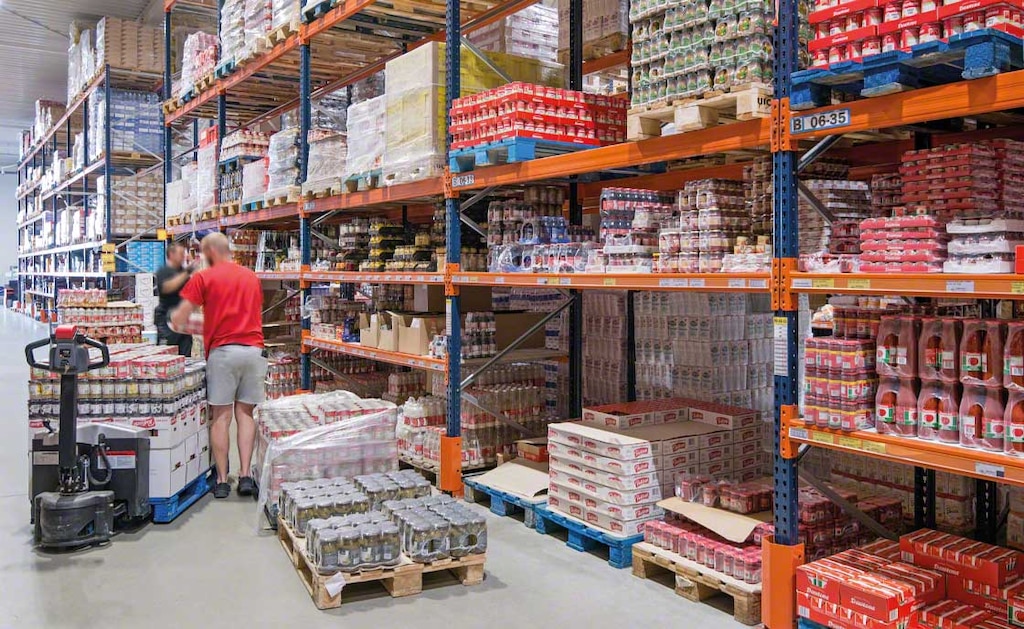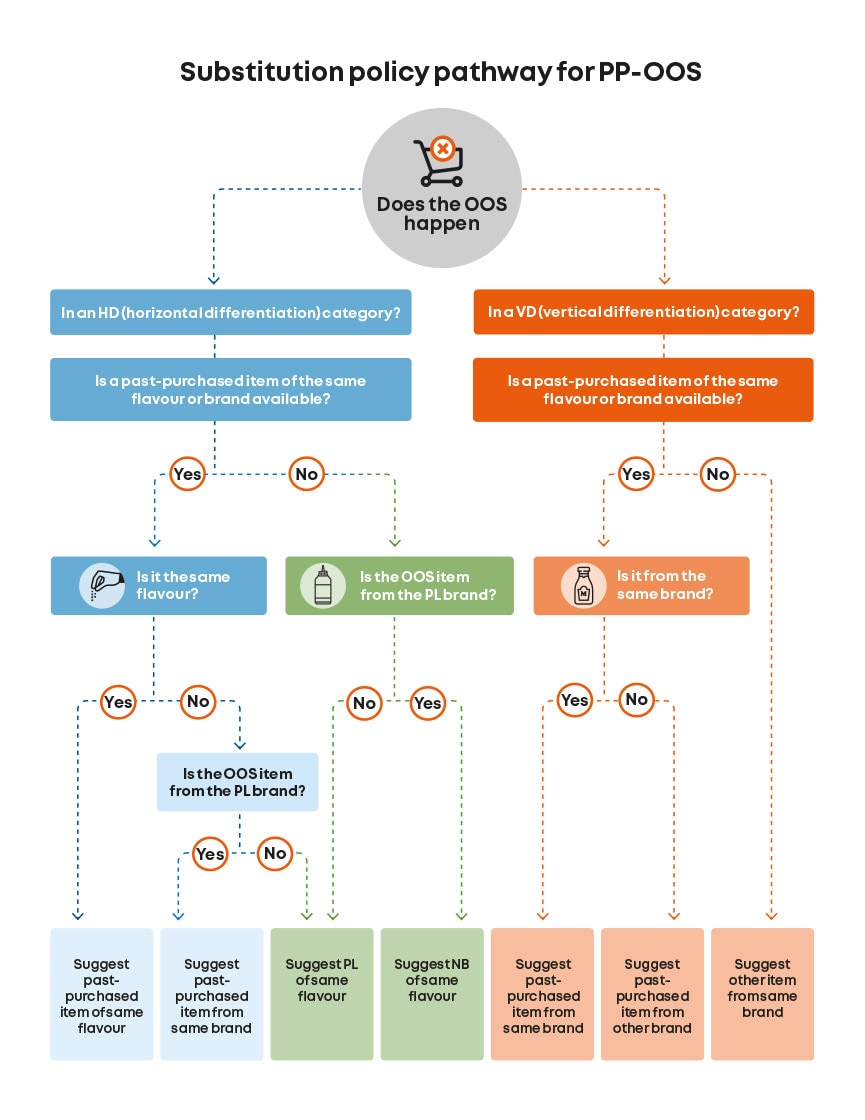
LOGISTICS RESEARCH
By Dong Hoang and Els Breugelmans
Online grocery shoppers place their orders before the actual pick-up or delivery date. Due to this time gap, products can be available at the time they are ordered but then go out-of-stock (OOS) on the dispatch date. These post-purchase (PP) OOS events represent one of the top three drawbacks of online shopping experiences.
Studies that have investigated how retailers might mitigate the negative impact of OOS recommend, among other strategies, revealing the OOS prior to consumers’ selections and offering financial incentives for future orders or backorders instead of cancelling the entire transaction. While monetary compensation reduces immediate dissatisfaction, it is also the least profitable solution for retailers.
30-45% of shoppers express dissatisfaction with substitutions
Therefore, to deal with the consumer frustration evoked by PP-OOS, online grocery retailers often replace the item with a substitution rather than leave the customer empty-handed. But when a PP-OOS occurs, the consumer is no longer in the purchase phase and does not have easy access to remaining alternatives. Therefore, the online retailer becomes responsible for selecting a suitable substitute, offered during the receipt phase. Because the substitution aims to prevent or mitigate consumers’ dissatisfaction with the OOS, it is crucial for companies to have an effective strategy for selecting the most suitable option. This choice, however, is far from obvious; 30–45% of shoppers express dissatisfaction with the substitution offered following a PP-OOS.
Still, recommending a substitution for a PP-OOS is an interesting policy and, in fact, a common practice among online grocery retailers. Logistically, these businesses likely need to select the substitution themselves (rather than offer consumers the choice) to maintain the efficiency of their online order handling and limit the time required to fulfil each order.

Substitution policies
Previous research has shown that when considering a substitution, consumers tend to focus on its similarity to the item they intended to purchase and whether they are familiar with the alternative, e.g., their prior experience with it. Drawing on these key factors, a study published in the Journal of Retailing analyses the effects of dominant attribute similarity (policy 1), of having purchased the substitution in the past (policy 2) and their interaction.
Similar characteristics
Similarity reduces cognitive decision-making effort. However, similarity is not homogeneous; it depends on the attribute, such as flavour or brand, that is dominant. Our hypothesis maintained that the attribute chosen to match the OOS item plays a vital role in consumer satisfaction. Two main differentiation strategies are vertical and horizontal:
- Vertical differentiation (VD) occurs when products can be ordered easily according to their levels of quality or performance. Examples of VD categories include margarine and ketchup.
- Horizontal differentiation (HD) exists with products that cannot be categorised objectively, as they are generally differentiated by attributes such as flavour. This can happen with cereals, pizza and crisps.
Consumers are more likely to accept products they purchased in the past
When proposing a substitution, it is thus important to consider whether the category is vertically or horizontally differentiated. In a VD category, what matters is the performance or quality of the brand; consequently, one wants to offer a substitution that matches the brand of the unavailable product. In an HD category, the attribute that differentiates, however, is the flavour. Therefore, one should try to offer a substitution that matches the flavour. In doing so, companies can propose different brands and offer the same flavour of a private label (PL) or of another national brand (NB).
Substitutions purchased previously
People tend to prefer familiar over unfamiliar products and often have a set of options in mind that can satisfy their needs. Hence, another hypothesis was that in both VD and HD categories, consumers would be more likely to accept products they purchased in the past as a substitution.
Online purchase simulation
To collect data for the study, an online purchase experiment was used that mimicked an online grocery shopping environment. Each category included a set of NBs and one PL of a hypothetical retailer, for which respondents were asked to imagine it was the one where they frequently shopped. To capture whether consumers received a substitution that matched their prior purchases (a familiar product), information was collected about which products they had bought in the 12 months before the experiment.
The study consisted of three parts: a pre-simulation questionnaire, a purchase and delivery simulation task and a post-simulation questionnaire. After respondents completed the transaction, they had to imagine that, prior to the delivery time, they received a notification that the item they ordered was out of stock, and the retailer had selected a substitution.

The notification read: “The item you ordered was: [name of PP-OOS item]. The substitution item given is: [name of substitution].” The substitution was randomly selected to reflect one of the three attribute-matching conditions: same brand, same flavour NB or same flavour PL. For some of the respondents, these substitutions were purchased before (these were the conditions one was familiar with); for other respondents, these substitutions were not bought previously (unfamiliar products).
After seeing the OOS and suggested substitution, the participants indicated whether they wanted to accept or reject that option. Finally, the respondents completed a short questionnaire on their perceptions of the received substitution (quality, value, fairness) and their opinion of the retailer (trust, satisfaction).
Results and recommendations
The effectiveness of the substitution policies in response to PP-OOS scenarios was tested with two representative samples of more than 3,000 UK consumers. The experiment yielded the following results:
- In HD categories, a substitution is more likely to be accepted if it matches the flavour of the PP-OOS rather than the brand.
- On the other hand, in VD categories, shoppers are more inclined to consider the alternative satisfactory if it is from the same brand.
- Consumers are much more liable to accept products they have purchased previously.
Retailers can implement effective substitution policies
These findings might reflect, as an underlying mechanism, perceptions of fairness. If PP-OOS represents a service failure, then a substitution that matches the dominant attribute (policy 1) or that has been bought in the past (policy 2) might appear like a fairer exchange and an indication that retailers have devoted adequate attention to their customers. The flowchart depicts how online retailers can implement effective substitution policies.

Substitution policy pathway for PP-OOS
To illustrate the flowchart, a comparison was made in how the acceptance rate changed when the retailer randomly picked a past-purchased item as a substitute versus using the most effective policy as suggested by our study (reflected in the flowchart). The average acceptance rate for the substitution significantly improved from 66% (for the random pick) to 75% when following the proposed policy.
Potential of ML and AI
While our study offers a pathway for substitution decisions that most retailers can apply, large companies may advance to more flexible predictive models using machine learning (ML) and artificial intelligence (AI) to accommodate a greater number of categories and transactions. Subsequently, automation may also enable retailers to communicate with consumers instantly when PP-OOS occurs, opening the door to more options to satisfy customers.
Original publication:
Hoang, Dong, Breugelmans, Els. 2023. "‘Sorry, the product you ordered is out of stock’: Effects of substitution policy in online grocery retailing". Journal of Retailing 99 (Elsevier).
©2022 The Author(s). Licensed under CC BY 4.0


